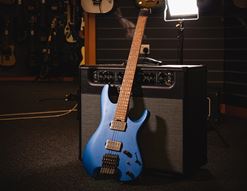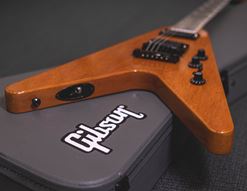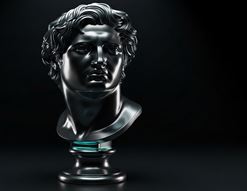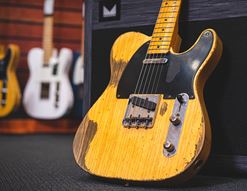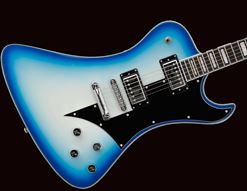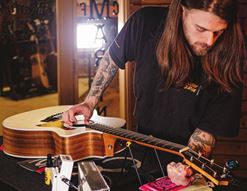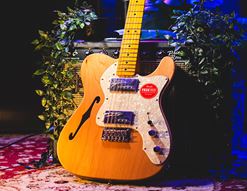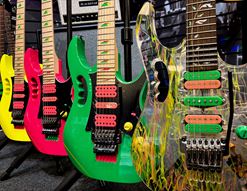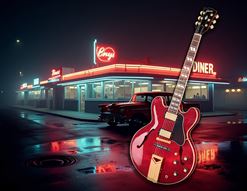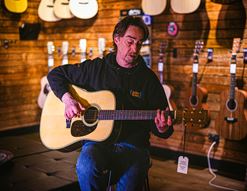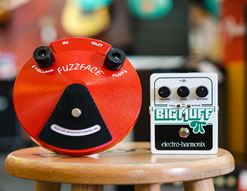1967: the Hippy Dream. The late 60s were all about peace, free love, the Summer of Love and opening your mind over in California, or so we are often told. The centre of the hippy revolution brought about a musical and cultural change that has never been repeated on such a scale, bringing awareness of the power of art to the masses.
But there was a darker side to that bright sunshine. For every Woodstock, there was a Vietnam; and for every Beach Boys, there was a Charles Manson waiting in some shaded corner of Los Angeles or San Francisco, promising much and delivering something entirely other. The Age of Aquarius may well have been upon us back then, but it had a sting in its tail, too, and all of these years later, we remember both.
For many, one band straddled the darkness and light better than any other: The Doors. Formed literally on Venice Beach, the iconic (is there a better use of that word than when referring to Jim Morrison?) four-piece brought an arcane midnight feeling to the hippy dream, without losing that sense of the times that hung in the air for other bands.
The Doors were products of the late 60s without a doubt, but their influences were broader, and their intent altogether more shamanistic.
Contents
1967
The sixties can feel like a foreign, mythical place to those like me who weren’t alive for it. Is that how it was for the generation who were? Like an impossible and yet entirely welcome dream, the late sixties seemed more than anything else a more ‘alive’ time. People lived much of their lives outside with friends; music had the power to radically influence people, more so than governments…as I say, a seemingly impossible time.
The Doors came into this unreal world with a sound that matched and also subverted those feelings. Where did that sound come from? How did they manage to get so much quality from their first album? Why do people still care about The Doors, 58 years on from their debut?
In this blog, I’ll take a brief swipe at some of those questions, but I’m hardly a match for the endless tomes of Morrison-fronted books that exist out there already. I’ll look at that debut album - which turned 58 years young on the 4th January 2025 - and I’ll see if I can pinpoint the enduring appeal by looking into how it came about in the first place.
I’ve been a Doors fan for most of my life. I’ve stayed in Venice CA, along the road from where Jim and Ray first spoke of starting a band, and I’ve visited Morrison’s grave in Paris. I’ve watched a Doors tribute band play in the Venice Bistro, where the band themselves gigged regularly, and most importantly, I’ve had the rare opportunity and privilege of interviewing Doors guitarist Robby Krieger. I wasn’t there in the 60s, but apart from that, I’ve followed the path as closely as a person could, I suppose, and so that’s why I’m writing this for you today.
Here’s a little about that astonishing debut record, The Doors…
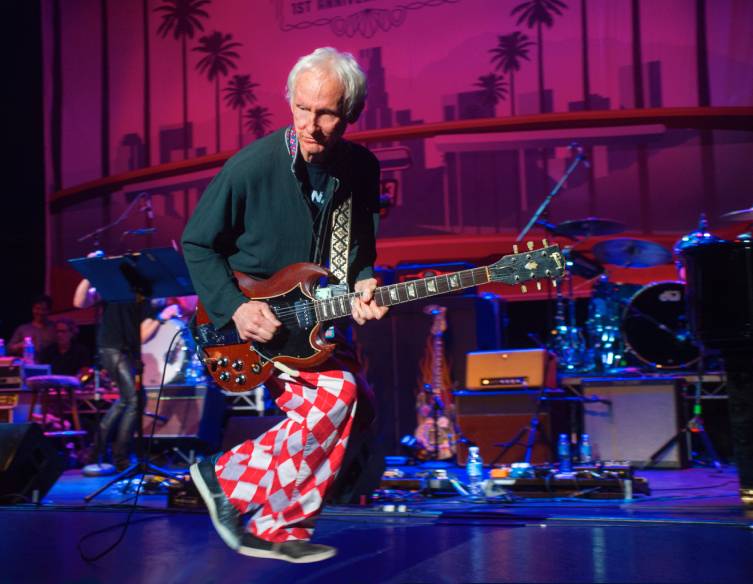
(Photo: Jill Jarrett)
The Debut
By the time The Doors had gotten themselves into the studio to record their debut, they’d already honed a large selection of songs thanks to a residency at the famous Whiskey a Go-Go on the Sunset Strip. Arthur Lee, lead singer of Love, had encouraged Elektra Records execs to check out the band and a deal was struck.
The Doors decamped to Sunset Sound Records studio and took just over a week - in late August 1966 - to record what many agree is one of the best debut albums in history. Producer Paul A Rothchild banned guitarist Robby Krieger from using any effects pedals on the recordings, seeing them as faddish and overused. Instead, Kreiger utilised his bottleneck slide and created a hugely distinctive sound.
Talking of sounds, The Doors famously had no bassist. Keys player Ray Manzarek handled bass duties with his left hand, playing basslines mainly on a Fender Rhodes bass keyboard. However, on this record - and all Doors records, actually - an ‘actual’ bassist hired to provide bass guitar on certain songs. Listen to Light My Fire and you'll clearly hear Larry Knecktal playing bass alongside Manzarek’s keys.
The band selected songs from their sizable repertoire and actually jettisoned future Doors favourites such as Moonlight Drive and Indian Summer, preferring to record them later in their career. Interestingly - given how willing they were to scratch off their own great tunes - the album contains two cover songs, which were included to offer a more rounded and expansive palette of sounds. Back Door Man was originally a Howlin’ Wolf tune (written by Willie Dixon) and made the cut to show off the band’s blues chops; and Alabama Song - a bizarre opera/showtune from Brecht & Weill - showed off that theatrical, more classical/theatrical sound that the band later developed.
The album contained many of the band’s most famous songs: Break on Through, Light My Fire and The End, plus a number of deeper cuts like End of the Night and Crystal Ship, which hinted at eerier influences. The album brought together all sorts of classical, jazz, rock, blues and r&b styles along with rhythms from further afield. Frank Sinatra was allegedly ready to sue Jim Morrison for stealing his vocal sound, which seems absurd until you consider it a little more closely!
Together, the Doors had crafted a sound that nobody else had, or has had since. Each member brought important parts of the puzzle to the table, resulting in extremely potent and effective music. We’re talking about it today, 58 years later, so the proof is right there!
Anyway, work on The Doors was complete by early September. In the run up to the album’s January 4th release, Elektra records hired a huge billboard on Santa Monica Boulevard to advertise the band, the idea being that people would assume they were already a massive success.
This marketing angle certainly worked: the record was an immediate success, reaching number 2 on the US Billboard chart. It has since sold well over 13 million copies (in total, The Doors have sold over 100 million records worldwide), and was instantly heralded as ‘an album of magnitude’ by Crawdaddy magazine. It has since been constantly voted as one of the best albums of all time in places like the NME, The Guardian and Rolling Stone. The band are obviously high in the stratosphere of legendary musicians, with movies and documentaries being made about their unique story and sound.
Talking about their sound, here are my top ten examples of great Doors tunes for you to each discover, re-discover or just enjoy once again…
Top Ten Doors Songs
Now I give you an entirely subjective top ten, for a band who clearly have far more than ten great songs. I’ve included a bunch of classics, but also opted for some personal favourites to add some less-obvious spice to proceedings. The Doors only released 6 studio albums within Jim’s lifetime (not bad for a 5 year period!), so it’s worth going through the band’s entire output (post-Jimbo records don’t count, obviously), but this curated list will get you started.
Break on Through
The first tune from the first album sets the tone perfectly. An unusual rhythm for rock music, Break on Through’s Brazilian Bossa Nova beat signals that the musicians involved were not just interested in playing straight rock.
The tune was a bit of a Vietnam anthem, or at least a rallying call for the youth of 1967. Critics picked up on the literary qualities of the song, the first indication of Morrison’s status as a pre-eminent rock poet.
Strange Days
Rather than playing safe on album number 2, The Doors decided to double down on their unorthodox sound. As with many of their songs, Strange Days was written prior to the album sessions, with live recordings from a year previous featuring the tune in its finished state.
A moody and mysterious piece, Strange Days brought more of that dark, moonlit side of The Doors’ sound out, with allusions to Bacchanalian parties and ‘nights of stone’.
Strange Days also actually marks one of the first ever uses of the Moog synthesizer. Rather than keyboardist Ray Manzarek being involved, it was actually Jim who brought it in, in order to affect his voice. As engineer Bruce Botnik said:
“We created an envelope where we could feed Jim's track into the Moog so that he could play any note on the keyboard and it would process his voice ... I then added a little delay and fed the whole thing into an infinite tape repeat. That was hand-played.”
Light My Fire
At the time, this was possibly the band’s biggest song. Written mainly by guitarist Robby Krieger, the track is the definitive Doors tune for many people and was a number one single in April 1967, a few months after the debut album was released.
The keyboard riff is famous, played with a Vox Continental along with a Fender Rhodes piano bass. Krieger would of course play his famous Gibson SGs - normally an SG Special - but on records he’d often also use a black Les Paul Custom.
One particular lyric sparked a brush with controversy, though, and it wouldn’t be the band’s last by any means. When playing on the Ed Sullivan show - a huge opportunity for exposure in the US - the show’s producers wanted Morrison to change his lyric of “Girl, we couldn’t get much higher” to “...get much better”. Morrison agreed, and then proceeded to sing his original lyric during the live broadcast. When informed that they’d be banned from ever performing on the Sullivan show again, Morrison was quick in his response: “Hey man, we just did the Sullivan show”.
Riders on the Storm
A spooky song for a band who specialised in spooky songs, Riders on the Storm has some added eeriness due to the fact that it was the last song ever recorded by Morrison. The single was released in June 1971, a mere month before he died in Paris.
The song began life as a set of lyrics Jim had written about an imaginary hitchhiking murderer. The Summer of Love was well and truly over!
The song has been inducted into the Grammy Hall of Fame for being ‘of historical significance’, but let’s just call it for what it is: it’s one of the best basslines in rock, some of the smoothest keyboard performances, and one of the grooviest and most menacing songs in the Doors’ catalogue. Add to this some adroitly philosophical lyrics and we’re talking stone-cold classic here.
LA Woman
Jim always wanted the band to lean into more blues-based music, and whilst threads of blues are evident throughout the Doors’ catalogue (particularly the debut record), those influences really came together in their last album, LA Woman.
LA Weekly called this album’s title track the all-time best song written about the city of Los Angeles, and some even see it as being Morisson’s goodbye to the city, since he left for Paris soon after album sessions finished.
The line ‘Mr Mojo Risin’’ is an anagram of ‘Jim Morrison’, and was an alias the singer used when checking into hotels, as well as having a more salacious meaning. Robby Krieger considers this the ‘quintessential Doors song’.
Crystal Ship
This cut from The Doors’ debut is a real personal favourite of mine. Also used as the B-side to Light My Fire, The Crystal Ship stands out for its elegantly baroque music and deceptively ambiguous lyric. Ostensibly about a relationship breakup, The Crystal Ship could easily be about dreaming, tripping or dying depending on how you feel like taking it.
This is one of the many songs where keyboardist Ray Manzarek gets to shine, both as a composer and arranger.
Touch Me
For the Soft Parade record, the band expanded on their regular instrumentation by adding brass and string sections, which moved their sound into a pretty different place. Not everyone agrees that this was a great move for them, considering how strongly distinctive The Doors already sounded, but this sweeping hit single brings it all together pretty excellently if you ask me.
Again, John Densmore pushes ‘pop’ boundaries with his exotic rhythms, and the song (again written mainly by Krieger) features a saxophone solo by Curtis Amy. Fun fact: the tune was originally called ‘Hit Me’ in reference to playing blackjack, but Morrison wisely thought ahead and changed the lyric in case the audience started getting ideas…
People are Strange
One of the band’s most famous songs, this track from their second album reportedly came about after Densmore and Krieger took a depressed Morrison out for a walk in the famous Laurel Canyon neighbourhood of LA. In Densmore’s words: (Jim said) “‘Yeah, I feel really good about this one. It just came to me all of a sudden ... in a flash – as I was sitting up there on the ridge looking out over the city.' His eyes were wild with excitement. 'I scribbled it down as fast as I could. It felt great to be writing again.' He looked down at the crumpled paper in his hand and sang the chorus in his haunting blues voice.”
Far from the blues in terms of the instrumentation, this track shows more of the theatrical, ‘circusey’, European sound that The Doors often adopted. There’s a Mandela Effect with this song, too: it’s not their version playing at the beginning of The Lost Boys, but an Echo and the Bunnymen cover!
Blue Sunday
Blue Sunday is a deep cut from the Morrison Hotel record. I’ve included it today because I think it’s such a great example of the curious ‘in between’ sound the Doors occupied. It’s warm and romantic - almost carefree and whimsical - but there’s an undeniably dark edge in there. Whether it’s the chord change or the lyrics (which can once again be taken in a number of ways), the effect is considerable, particularly for such an otherwise unassuming piece of music. The Doors were masters of this mood.
The End
The End is perhaps the most infamous Doors song of all. Stretching to eleven minutes on their debut record and often much longer live, The End is a kind of dark melodrama that takes in patricide and oedipal topics along with more overtly psychedelic, dissociative and surreal lyrical passages.
Musically, it’s vaguely Eastern sounding without being overtly guilty of musical tourism, and acts almost more like a ‘guided experience’ than a simple song. Whether you discovered this at the end of the album or at the beginning of Apocalypse Now, you’re unlikely to ever forget this song.
I am the Lizard King, I Can Do Anything
How did you feel about that top ten? I certainly missed loads of great Doors tunes, but that’s because they have an inordinately high level of quality control! A top 30 would’ve still been lacking, but I hope the songs I chose gave a decent cross-section of what Morrsion, Krieger, Densmore and Manzarek brought to the world.
What was - and is - the appeal of the Doors? It seems to me that it’s a mixture of great songs, controversy (which I didn’t really touch on in this blog), a sound that was timeless and out-of-step with fashion (therefore never really going out of fashion either) and the cult-like appeal of their doomed, poetic frontman. It’s rock mythology, basically, but backed up by a body of work that’s almost incomparable.
58 years is a long time for any music to survive, but I have a distinct feeling that people will still be listening to The Doors in quiet marvel in 2125 and beyond. They didn’t have a long time together, but their music has lived longer than most. In honour of that, stick on some Doors today and unleash your inner shaman!


